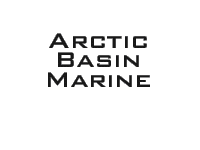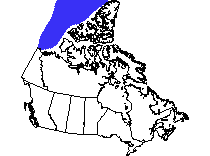|
Location
| Climate | Geography | Flora
and fauna | Humans
Location
This ecozone is found to the west of the Northwest Territories' archipelago.
Climate
When people think about the arctic, this is the region that they are
likely thinking of. The Arctic Basin is extremely dry, receiving only
100 to 200mm or precipitation per year. Average winter temperatures
are a bitterly cold -35ºC, and mean summer temperatures only rise to
5ºC. Its extreme northern position creates winter nights and summer
days that are longer than in any other Canadian ecozone. This section
of the Arctic Ocean is permanently frozen, and rotates slowly around
roughly the North Pole in a counter-clockwise fashion. The waters here
do not mix well because of ice cover and feeble tides.
Geography
Nine-tenths of this ecozone is comprised of ice floating on the frigid
Arctic Ocean, and only a miniscule portion is solid land. Islands of
ice kilometers long and up to two metres thick are common here. Below
the ice, the ocean floor is found at an average depth of 3600 metres,
although the Lomonosov Ridge near the North Pole reaches up to a kilometre
below the ocean's surface.
Flora
and Fauna
Plants
No true plants grow here, and nothing grows on the upper surface of
the ice. Algae bloom on the underside of the ice come summer, and phytoplankton,
tiny plantlike organisms, are found in the spring and summer along the
edges of the ice packs or in open stretches of water.
Animals
There is some animal life at the edges of the ice packs, but otherwise
everything is under the ocean's surface. Some of the species found here
include the walrus,
polar bear,
beluga,
narwhal,
bearded seals,
harp seal,
harbour seal,
ringed seal,
bowhead whale,
ivory gull,
and some migratory birds.
Humans
As there is virtually no land here, there is no permanent population.
Scientific and petroleum exploration are the two major activities.
 

|







